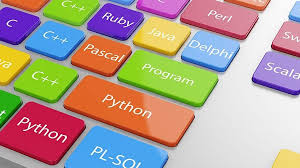The Evolution and Importance of Programming Languages in the Digital Age
Introduction
In the digital age, programming languages are the foundation of all technological advancements. They are the tools that developers use to communicate with computers, instructing them on how to perform specific tasks. From web development to artificial intelligence, programming languages enable the creation of software applications that have transformed industries and daily life. This article explores the evolution of programming languages, their importance, and the most popular languages today.
The Evolution of Programming Languages
The history of programming languages dates back to the early
19th century with Ada Lovelace's work on the Analytical Engine, where she
created the first algorithm intended for a machine. However, modern programming
languages began to take shape in the mid-20th century.
1. Assembly Language
(1940s-1950s) : The earliest programming
languages were low-level assembly languages, which were closely tied to a
computer's hardware. These languages required programmers to write instructions
in a symbolic code, which the computer's assembler would convert into machine
code. While assembly languages provided more control over hardware, they were
difficult to learn and prone to errors.
2. High-Level
Languages (1950s-1970s) : The 1950s saw
the development of high-level programming languages, which abstracted away much
of the complexity associated with assembly languages. The first high-level
language, Fortran, was developed by IBM in 1957 for scientific and engineering
applications. This was followed by COBOL (Common Business-Oriented Language) in
1959, which was designed for business data processing. These languages allowed
programmers to write code in a more human-readable format, making programming
more accessible.
3. Structured
Programming (1960s-1980s) : As
programming projects grew in complexity, the need for better software design
practices became apparent. Structured programming, characterized by the use of
functions and control structures, emerged as a way to write clearer and more
maintainable code. Languages like C (1972) and Pascal (1970) popularized
structured programming paradigms, setting the stage for future languages.
4. Object-Oriented
Programming (1980s-Present) : The advent
of object-oriented programming (OOP) marked a significant shift in software
development. OOP languages like C++ (1983), Java (1995), and Python (1991)
introduced the concept of "objects" — encapsulated data and functions
that represent real-world entities. This approach made it easier to model
complex systems and reuse code, leading to more efficient and scalable
software.
5. Modern
Programming Languages (2000s-Present) :
The 21st century has seen an explosion of new programming languages, each
catering to different needs and industries. Languages like JavaScript, Python,
and Go have become dominant in web development, data science, and cloud
computing, respectively. Additionally, functional programming languages like
Haskell and Scala have gained popularity for their ability to handle concurrent
and parallel processing.
The Importance of Programming Languages
Programming languages play a crucial role in the development
of technology and have far-reaching implications for society. Here are some
reasons why they are important:
1. Innovation and
Development : Programming languages are
the driving force behind technological innovation. They enable the creation of
software that powers everything from smartphones and computers to medical
devices and autonomous vehicles. As new languages and frameworks emerge, they open
up new possibilities for solving complex problems.
2. Economic Impact : The software industry is a significant
contributor to the global economy. Companies like Microsoft, Google, and Apple
rely on programming languages to develop their products and services.
Additionally, the demand for software developers continues to grow, creating
job opportunities and contributing to economic growth.
3. Accessibility and
Education : High-level programming
languages have made it easier for people to learn to code. Educational
platforms like Codecademy, Coursera, and Udemy offer courses in various
programming languages, making programming accessible to a wider audience. This
democratization of programming knowledge empowers individuals to pursue careers
in tech and build innovative projects.
4. Interdisciplinary
Applications : Programming languages are
not limited to computer science. They are increasingly used in fields like
biology, finance, and art. For example, Python is widely used in bioinformatics
for analyzing DNA sequences, while R is popular in statistics and data
analysis. This interdisciplinary approach expands the potential applications of
programming and fosters collaboration between different fields.
Popular Programming Languages Today
1. Python : Python is known for its simplicity and
readability, making it an ideal language for beginners. It is widely used in
web development, data science, artificial intelligence, and automation.
Python's extensive libraries and frameworks, such as Django and TensorFlow,
make it a versatile choice for a variety of applications.
2. JavaScript : JavaScript is the backbone of web
development. It is a versatile language that can be used for front-end and
back-end development, thanks to frameworks like React, Angular, and Node.js.
JavaScript's ability to create interactive web pages and handle asynchronous
operations makes it indispensable for modern web applications.
3. Java : Java is a robust, object-oriented language
widely used in enterprise applications, Android development, and large-scale
systems. Its platform independence — "write once, run anywhere" — has
made it a popular choice for cross-platform applications. Java's strong
community support and extensive libraries contribute to its longevity.
4. C++ : C++ is a powerful language known for its
performance and efficiency. It is commonly used in system software, game
development, and applications requiring real-time processing. C++'s support for
low-level memory manipulation and object-oriented features makes it suitable
for high-performance applications.
5. Go : Developed by Google, Go (or Golang) is
designed for simplicity and concurrency. It is increasingly used in cloud
computing, microservices, and distributed systems. Go's fast compilation,
efficient execution, and easy-to-read syntax have contributed to its rapid
adoption in the tech industry.
Conclusion

